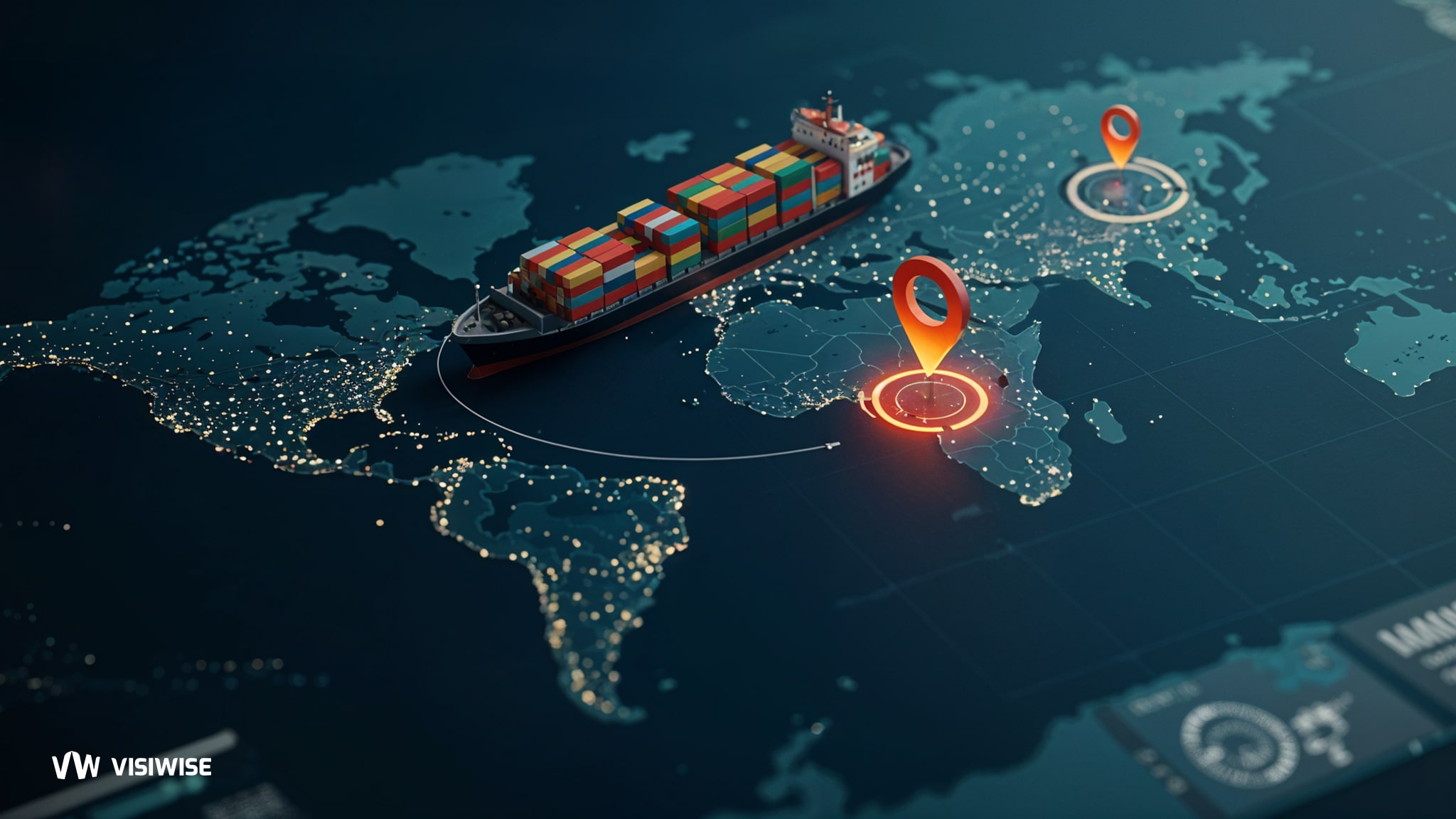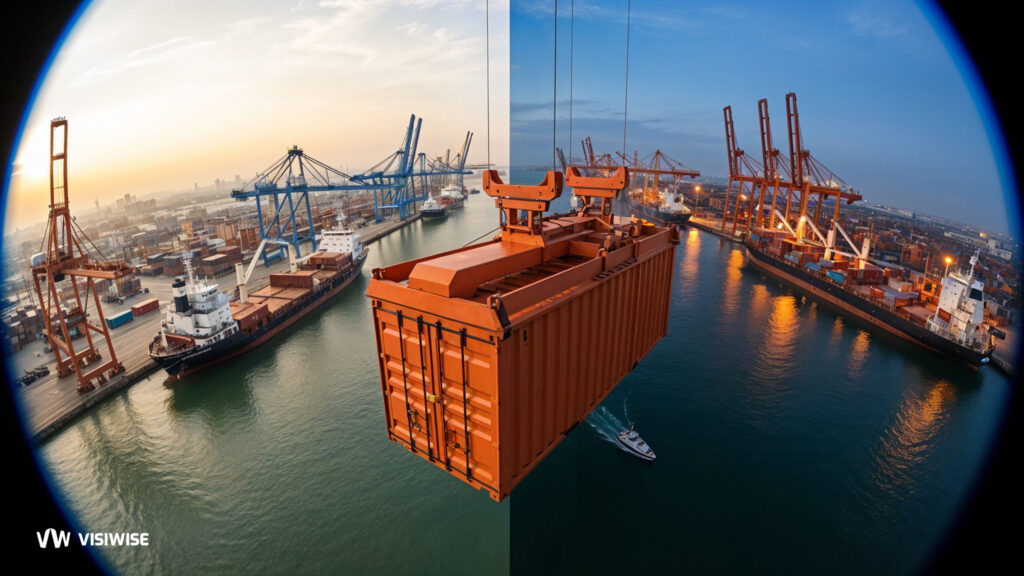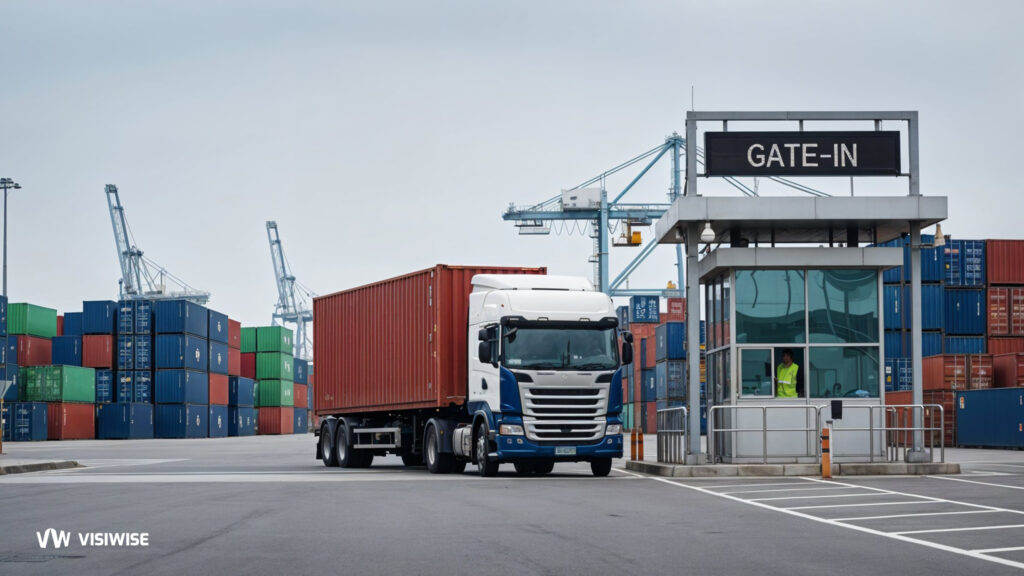When goods are bought or sold “Delivery at Place” (DAP) it means that the Seller delivers the goods to a place previously agreed to by the seller and the buyer. This can be any location.
Here in this blog post we’re going to break down what it exactly means and what are the responsibilities of buyer and seller under the Incoterms rules.
Understanding DAP in Shipping
DAP is a Shipping Incoterm that means “Delivered at Place,” where the seller is responsible for all costs and risks associated with the delivery of the goods to the final agreed-upon place, usually the buyer’s premises. DAP works for sea freight, air freight, road freight, and rail freight, the buyer is only responsible for importing and unloading the cargo.
Buyers need to understand DAP does not mean there will be no additional charges outside of the DAP product cost. The only other fees the buyer needs to factor in are freight insurance, import taxes, customs brokerage, and any expenses incurred to unload the cargo from the container at the final destination.
DAP has since replaced the similar Incoterms, DAF, DES, and DDU, which were retired in previous decades.
Obligations Of the Buyer in A Glance
If you are the buyer, you are obligated to:
- Pay for goods in line with the agreed sales contract.
- Handle import duties and taxes.
- Pay for import customs clearance.
- Unload the transport upon arrival at the named destination.
Obligations Of the Seller in A Glance
If you are the seller, you are obligated to:
- Manage pre-carriage and delivery to port/airport.
- Raise all relevant documents including commercial invoices, packing list and any other specialist documents necessary.
- Manage export licences, export packaging, and export marking.
- Deal with origin customs formalities.
- Manage and pay for freight on the agreed shipping term.
- Pay for pre-shipment inspections.
- Pay for loading charges.
- Cover the carriage up to the named delivery point.
Risks and Costs for the Seller
The seller is responsible for arranging and paying for transportation to a place agreed to by both the buyer and the seller. The risk transfers to the buyer right before the goods are unloaded at the agreed-on place. This is an important difference with DAT, where the Seller is responsible for unloading. The agreed-on place can be a terminal at a port, a roadside terminal, or the buyer’s premises. If there are delays before the goods have cleared customs, the seller is responsible for any cost incurred, unless otherwise agreed.
Risks and Costs for the Buyer
The buyer is responsible for unloading the goods and any further transportation. The buyer is also responsible for arranging and paying for any import documents and taxes. The seller is obligated to hand over any documents or information needed to enable the successful import, at the cost of the buyer. Import duties and taxes also need to be paid by the buyer.
Potential Issues for the Seller
Because risk is transferred to the buyer once the shipment is handed over at the destination terminal, the seller is responsible for the loss of or damage to the shipment. This means the seller is responsible for insuring the shipment, or paying for the loss if anything goes wrong.
Potential Issues for the Buyer
As the seller is arranging transportation, he will charge these costs to the buyer. If he can charge all costs to the buyer, he may have little incentive to keep transportation costs low. This means a relatively higher end-cost for the buyer, compared to when the buyer arranges transportation of the shipment.
Pros and Cons
| Advantages | Disadvantages |
| Buyer benefits from clearly defined responsibilities—only responsible once goods are delivered to the destination. | Buyer must pay all import duties, taxes, and handle customs clearance, which can lead to delays. |
| Minimal liability for the buyer during shipping—seller bears the shipping risk. | Customs delays can result in added costs like dunnage or detention, which are the buyer’s responsibility. |
| Helps buyers manage cash flow—payment often due only upon arrival of goods. | Shipping under DAP typically involves higher costs, as sellers factor in risk and responsibility into the final price. |
| Enables smaller, more flexible inventory orders when combined with bonded warehouse arrangements near the buyer. | Buyer may lose cost-saving opportunities by not using their own freight forwarder or logistics providers. |
| Ideal for routine reordering—products can be pre-positioned by sellers in bonded warehouses for fast delivery. | Risk of seller increasing deposit requirements or adding extra fees due to the risk of the buyer refusing to pay import duties. |
DAP vs. Other Incoterms
| Aspect | DAP (Delivered at Place) | EXW (Ex Works) | FOB (Free on Board) | CIF (Cost, Insurance & Freight) | DDP (Delivered Duty Paid) |
| Delivery Location | Seller delivers to the buyer’s named place of destination | Buyer picks up goods from seller’s premises | Delivery at port of shipment; buyer arranges main transport | Delivery to destination port | Seller delivers to buyer’s named place, including clearance |
| Main Transport Arranged By | Seller | Buyer | Buyer | Seller | Seller |
| Risk Transfer Point | When goods are delivered to the named place | At seller’s premises | Once goods are loaded on the vessel | Once goods are loaded on the vessel | At buyer’s destination point |
| Who Pays Freight? | Seller | Buyer | Buyer | Seller | Seller |
| Who Handles Import Duties? | Buyer | Buyer | Buyer | Buyer | Seller |
| Buyer Responsibility | Import clearance, duties, and taxes | All transport, insurance, export/import clearance, duties | Ocean freight, insurance, import clearance, and duties | Import clearance and duties | Minimal—just unload and receive |
| Cost to Buyer | Moderate | Low (but higher operational effort) | Moderate | Moderate | High |
| Buyer’s Control | Moderate | High | High | Moderate | Low |
| Ideal For | Buyers wanting low shipping risk, but control at destination | Experienced buyers with logistics network | Buyers wanting to control freight from port | Buyers wanting minimal shipping effort to port | Buyers seeking all-inclusive delivery |
FAQs
What are the DAP shipping terms?
DAP = Delivered at Place; goods delivered to a place agreed between buyer and seller, outside the supplier’s country.
Who pays for DAP shipping?
The seller.
What are the buyers’ responsibilities in DAP shipping terms?
Send documents on time, pay import customs, notify seller of delivery date, and unload goods.
What are the seller’s responsibilities in DAP shipping terms?
Provide documents, choose carrier, pay export customs, notify buyer at delivery point, and supply transport documents.
Top things to take care of for the buyer and seller?
Accurate paperwork, correct HS code, check extra duties, agree on timing, ensure timely customs clearance.
What is the difference between DAP and FOB Incoterms?
FOB: risk transfers at shipment port;
DAP: seller handles export and delivery to destination.
What is the difference between DAP and DDP Incoterms?
DDP: seller also handles import customs;
DAP: buyer handles import.
What’s the difference between CPT and DAP terms?
CPT: risk transfers to buyer when goods handed to first carrier;
DAP: seller bears risk to destination.
CPT: seller unloads;
DAP: buyer unloads.
How to differ DAP and CIP terms?
DAP: seller liable for cargo loss; no insurance obligation.
CIP: buyer liable; seller pays insurance.
What is the difference between DAP and EXW Incoterms?
EXW: buyer picks up from seller’s location.
DAP: seller delivers to buyer’s location.
What’s the difference between DAP and DDU shipping terms?
DDU = Delivered Duty Unpaid (old term); replaced by DAP in Incoterms 2010.
What is the difference between DAP and CIF shipping terms?
CIF: seller pays insurance and delivers to port.
DAP: no insurance; delivery to specific location.
How to differ DAP and DAT shipping terms?
DAP: delivery to a named place; buyer unloads.
DAT: delivery to terminal; seller unloads.
Where is the named place for handling goods and responsibilities to the buyer?
Outside supplier’s country, usually buyer’s country.
Seller handles delivery; buyer handles unloading.
Does DAP Incoterms include unloading services?
No. Buyer unloads.
Who will pay the freight charge, local destination, and destination charge if the Incoterms is DAP?
The seller.
Can I have a container of goods shipped from China directly to my property?
Yes. Seller delivers to your property; you clear customs and unload.
Do DAP Incoterms include insurance?
No party is required to insure. Insurance is recommended.
What are the main issues of using DAP Incoterms for the buyer?
You must handle customs and unloading on time, or pay delay costs.
Do DAP terms include customs clearance?
Seller handles export customs; buyer handles import customs.



